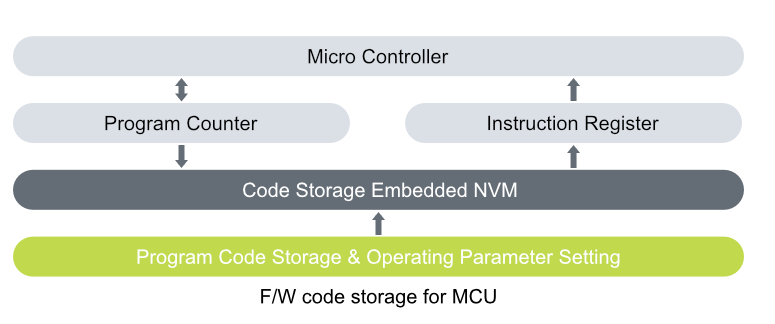
Code Storage
What is code storage?
Each Controller IC (i.e. MCU) requires a memory block to store program code and/or data to perform tasks. This memory block enables the designer to modify the IC for different applications by storing different firmware, program code, or instructions.
Non-volatile memory (NVM) is widely used in controller ICs for code storage. Other viable alternatives include Mask ROM and external flash; however, NVM provides the additional benefit of design flexibility and cost efficiency. Specifically, logic compatible NVM can be ported to different foundries, enabling multi-foundry manufacturing strategy.

eMemory’s Logic NVM Silicon IP Benefits and Features
eMemory provides embedded NVM solutions with various endurance specifications for code storage applications. MCU codes can be stored at the foundry stage, Circuit Probe (CP) stage, Final Test stage, or System stage, enabling superior flexibility for designers. Other benefits include:
Testable at the CP stage; thus, avoiding yield loss at Final Test (FT), Module, and System stages.
Optimized for various applications and densities.
Smallest silicon IP size for mainstream consumer electronic ICs.
Different solutions (OTP, MTP, OTP/MTP with ROM conversion option) for different specification requests.
OTP/MTP with ROM conversion option reduces overall programming time and test cost.
Support logic, mixed-signal, RF, high-voltage, BCD, SiGe, automotive, and low-power processes.
